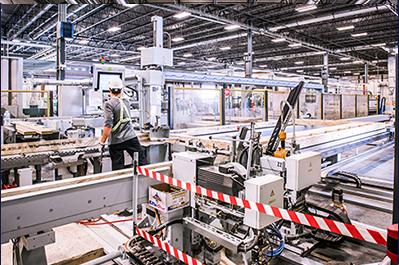A report published by global consultancy McKinsey paints a promising picture of the construction industry’s future over the next 15 years. It projects global construction spending escalating from $13 trillion in 2023 to $22 trillion by 2040 due to “unprecedented demand around the world.”
However, there are caveats.
“The demand is clear, but how the construction industry will meet it, is not,” McKinsey says.
Standing in the way is the industry’s productivity problem.
“Economic labour productivity (the economic value added per hour worked) has stagnated for decades globally despite technological advancements and improvements by individual firms.”
Discussion of construction industry productivity is nothing new. The one factor on which most pundits agree is that labour shortages are impacting productivity growth.
“The obvious way to grow construction output amid stagnant productivity would be to hire more people, but the current labour market has pushed that option off the table in many economies,” says McKinsey. “In the United States, the average number of vacancies in construction almost doubled between 2017 and 2023, increasing from 200,000 to 380,000 across the industry.”
Pending retirements will make matters even more critical. McKinsey estimates 41 per cent of the 2020 construction workforce will be retired by 2031.
That’s a demographic reality for the entire world, as described in a separate McKinsey report.

In a 2023 survey conducted by the U.K.’s Royal Institution of Chartered Surveyors, less than 20 per cent of North American respondents said their company’s overall productivity had increased over the previous 12 months. Only three per cent felt it would improve over the next year. Labour productivity was cited as the single greatest drag.
New innovative technology, and higher adoption levels of what is already available, should be the obvious solution to both the skilled labour shortage and productivity.
However, McKinsey cites a low overall level of investment in IT by the construction industry, less than one-third that of automotive and aerospace. There is also the long-standing bias towards bespoke onsite construction versus factory-built modular approaches. McKinsey says what investment has been made in technology over recent years has been largely focused on “increasing control or other priorities, such as design, safety and usage of new materials, and less on direct workforce productivity.”
The importance of AI, digital twins and other aspects of BIM cannot be understated at the design and planning stages. However, if the main drag on industry productivity growth lies with the shortage of skilled labour required to do the actual construction work, then technology somehow must relate to the worksite.
Modular and factory fabrication are an accepted means to that end. In-situ 3D printed concrete construction can also work in certain situations. The common thread is robotics, whether factory-made prefabricated building components or a mechanical arm laying down layers of concrete to form walls.
Several robotic devices have been promoted over recent years, such as wearable mechanical arms to reduce individual worker fatigue, brick laying machines and fully independent robotic devices to transport and position heavy material all day.
More ideas are being developed.
A three-year project underway at the Jacobs School of Engineering at the University of California San Diego has researchers exploring the integration of robotics into the construction industry, particularly addressing those that could be described as “dirty, dull and dangerous.”
Going further, researchers are exploring how robots can use visual and 3D mapping to safely move or engage with an object, opening the door to robotic assembly of prefabricated components, much like Lego blocks.
While all these claim to improve site efficiency and therefore productivity, they currently come at too high a cost for many companies. However, construction may be faced with little choice. Future gains in productivity will depend on more technology-based advances in building assembly and the reduction of what McKinsey calls the “significant friction between design and construction” now hindering the introduction of increased innovation on the worksite.
John Bleasby is a freelance writer. Send comments and Inside Innovation column ideas to editor@dailycommercialnews.com.







Recent Comments